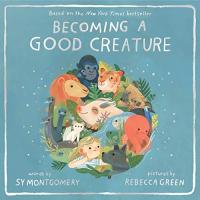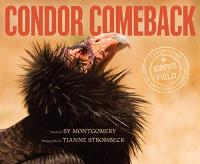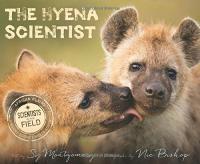
Bio
Sy Montgomery is a lifelong explorer: she has made four trips to Peru and Brazil to study the pink dolphins of the Amazon; and on other expeditions, she was chased by an angry silverback gorilla in Zaire; bitten by a vampire bat in Costa Rica; undressed by an orangutan in Borneo; and hunted by a tiger in India. She also worked in a pit crawling with eighteen thousand snakes in Manitoba; handled a wild tarantula in French Guiana; and swam with piranhas, electric eels, and dolphins in the Amazon.
She has collaborated for years with photographer Nic Bishop, and together they launched Houghton Mifflin’s award-winning “Scientists in the Field” series with The Snake Scientist, published in 1999. This series takes young readers into the fascinating world of scientists whose ‘laboratories’ are in the wild, often in some of the most remote corners of the world.
Sy has written more than 15 books for both adults and children. The Good, Good Pig, a moving memoir of life with her remarkable pig, Christopher Hogwood, is an international bestseller. Her book for children, Quest for the Tree Kangaroo: An Expedition to the Cloud Forest of New Guinea was the recipient of the 2007 Orbis Pictus Award and was selected as an Honor book for the ALA Sibert Award. In April 2010, she was awarded the Children’s Book Guild of Washington, D.C.’s Nonfiction Award for her distinguished body of work.
She is a 1979 graduate of Syracuse University, with degrees in journalism, French, and psychology. She lives in Hancock New Hampshire with her husband, and of course, lots of animal friends.
Books by this author

The author started learning about animals by observing her dog as a child. Her respect and affinity for animals grew as she did, turning into a career as a writer and chronicler of animals and their behavior. Gently illustrated, the author shares thoughtful tidbits which is sure to lead readers to her other books.
Becoming a Good Creature

Scientists are working to save the endangered California Condor. In rich narrative, the author provides information on the condor as well as the history and efforts of scientists to bring them back from the brink. Accompanying photographs add drama and personality for both feathered and human subjects.
Condor Comeback

Encantado: Pink Dolphin of the Amazon

Kakapo Rescue: Saving the World’s Strangest Parrot

Saving the Ghost of the Mountain: An Expedition Among Snow Leopards in Mongolia

When Temple Grandin was born, her parents knew that she was different. Years later she was diagnosed with autism. Her mother believed in her abilitie and supported her education, and Temple eventually went on to graduate school. Today, Dr. Temple Grandin is a scientist and professor of animal science at Colorado State University. Through her work she revolutionized the livestock industry. As an advocate for autism, Temple uses her experience as an example of the unique contributions that autistic people can make. This biography, complete with personal photos, takes us inside Temple’s extraordinary mind and opens the door to a broader understanding of autism.
Temple Grandin: How the Girl Who Loved Cows Embraced Autism and Changed the World

Readers may have to change their opinion of spotted hyenas after meeting them as they are studied in the wild. Fluid prose and stunning photographs combine insight into the field scientists and information about the animals they study. While they remain formidable carnivores, hyenas are surprisingly brave and social animals and appealing in appearance. Thoroughly resourced and documented, this is narrative nonfiction at its best.
The Hyena Scientist

There is great drama to be found on the Serengeti witnessed by scientists. Meet some of those who study the migration of wildebeest in Tanzania. Observe the animals that share the land with the wildebeest. The author’s insightful, illuminating, and highly readable narration in a handsome format with stunning photographs is also a plea for humankind to respect other mammals.
The Magnificent Migration: On Safari with Africa’s Last Great Herds

The Man-Eating Tigers of Sundarbans

The Quest for the Tree Kangaroo: An Expedition to the Cloud Forest of New Guinea

The Snake Scientist

The Tarantula Scientist
Find this author’s books on these booklists
Themed Booklist
Holiday Buying Guide 2019
Themed Booklist
Holiday Buying Guide 2020
Themed Booklist
My Autism Story: Books for Children and Teens
Themed Booklist



